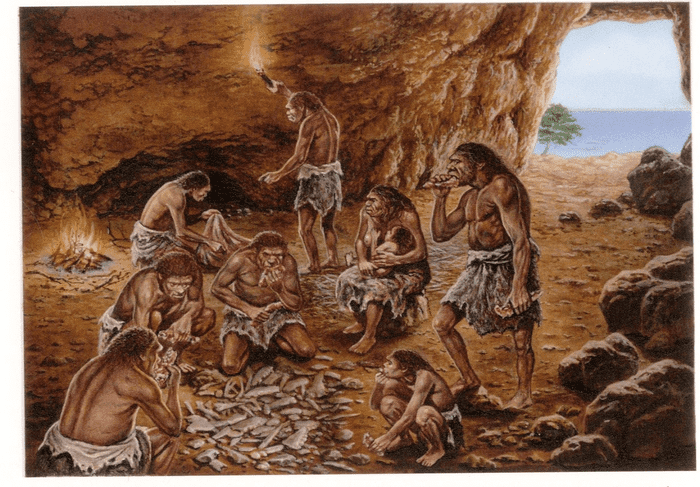
Although early humans moved about from place to place with the seasons in search of food, they often used caves on a semi-permanent basis. These convenient natural dwellings offered shelter to small communities of hunter-gathers and were the focal center of many of their activities, from cooking to religious ceremonies. To supplement these activities, Neanderthals and early modern humans would often make fires inside the cave to roast their meat, warm themselves during cold nights, and illuminate the dark cavern. But there’s a problem: fires make a lot of smoke, and indoor smoke has the propensity to choke and blind people. So how did they do it?
According to a new study performed by archaeologists at Tel Aviv University, the indoor fires worked because they were perfectly planned. Ran Barkai and colleagues built a virtual model of the famous Lazaret Cave on the French Mediterranean coast, placing 16 hypothetical hearths throughout the cave, studying how smoke moved for each.
The Grotte du Lazaret along the French Riviera was excavated for many years, providing archaeologists and anthropologists with rich evidence including hearths of Neanderthals or their close relatives around 160,000 years ago. The cave offers generous living spaces, measuring 40 meters deep, up to 15 meters high, and 15 meters wide. Although Homo sapiens lived in this cave as well, judging from skeletal remains, some 40,000 years ago, Lazaret’s long history sheltering humans is largely tied to Neanderthals.
For each hypothetical hearth, the researchers simulated smoke density throughout the 290-square-meter cave. It turned out that the spot with the most optimal smoke dispersion coincided with the location of the actual hearths unearthed in the sediment layers of the cave. These hearths were all very closely placed across more than 150,000 years of habitation in virtually the same spot, around 13 meters from the cave mouth, roughly at the center of the cave.
In this location, the fire could be exploited to its fullest for various activities and needs while exposing them to a minimal amount of smoke. The least favorable location was the cave’s entrance — although the risk of smoke pollution is the lowest there, such a hearth is too far away to support other essential activities.
Previously, archaeologists had found multiple hearths across the cave’s 28 defined sediment layers (each corresponding to a distinct period of occupation), all of which were confined to the same five-square-meter area at the center of the cave. This prime location was close to areas of specialized activity, including those reserved for butchering animals like red deer, a space for drying and cooking meat, a dining area, another that served as a trash bin for discarded bones, a tool-making area, and sleeping quarters.
Neanderthal interior designers
This prehistoric cave organization was not random but rather planned, according to the location of the fireplace.
“It is clear to us that once they entered, they made a survey of the cave and they invited a Neanderthal internal designer, and they decided, ‘We’ll put the kitchen here, we’ll put the sleeping area over here,’ and so on,” Barkai said.
These findings speak volumes about the organizational capabilities of Neanderthals, who were able to choose the perfect location for their hearth and manage the cave’s space as early as 170,000 years ago — long before modern humans set foot in Europe.
“This ability reflects ingenuity, experience, and planned action, as well as awareness of the health damage caused by smoke exposure. In addition, the simulation model we developed can assist archaeologists excavating new sites, enabling them to look for hearths and activity areas at their optimal locations,” Professor Barkai concludes.
The use of fire by early humans is still a matter of contention. Questions remain about when exactly in our evolution humans learned how to control fire and ignite it at a will and when humans began using fire on a daily basis. But if Lazaret is any indication, at least some groups of Neanderthals seemed to have a very good grasp of ancient pyrotechnics.
The findings were reported in the journal Scientific Reports.






